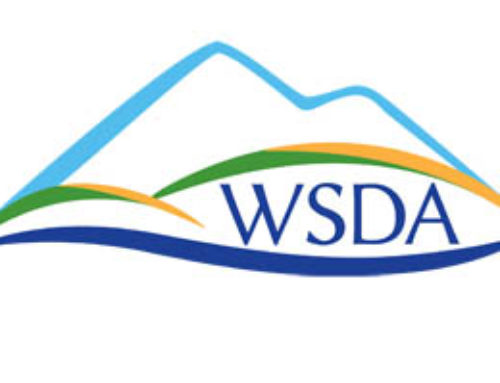
Brian Carter
In a perfect wine world, winemakers would only make wine from fully ripened grapes. But winemakers must often deal with fruit that is less ripe or too ripe.
Just as growers must often manipulate fruit quality in the vineyard, winemakers, too, have techniques they can use to improve fruit quality. Veteran winemaker Brian Carter recently explained how to overcome some of the challenges presented by grapes that are under- or overripe.
Carter, with 35 years of winemaking and wine consulting in Washington, has worked for some of the top wineries in the state. Since 2000, he has made wine for his own winery, Brian Carter Cellars, and specializes in wine blends.
Carter seeks diversity in his wines and goes out of his way to source Cabernet Sauvignon from various sites in Washington. In each vineyard, he’s looking for specific varietal characteristics brought out by the site.
“I want each lot of grapes to be different,” he said.
For example, in most years, Cabernet Sauvignon fruit for his favorite Cabernet-based blend comes from Red Mountain, while Cabernet Sauvignon grapes for his favorite Merlot-based blend come from Wahluke Slope.
“My favorite Cabernet for my Sangiovese-based blend typically comes from the central part of the Yakima Valley, which is the coolest of the three appellations.”
Certain varieties are more dependent on the site than others and do best in a narrow range of site parameters, he says. Others perform fine in a wide range of locations. He’s found that Syrah, Cabernet Sauvignon, Merlot, and Malbec can handle a wide range of sites and do well. But not so for other Bordeaux red varieties.
“Petit Verdot needs heat, so don’t plant it in a cool site,” Carter advised during winter grape talks. Mourvèdre, Grenache, and Cabernet Franc have more specific site needs. If planted in a site too cool, fruit flavors don’t develop, but fruit sunburns if planted in a site too hot.
“I don’t want Cabernet Franc to taste like Cabernet Sauvignon, so I have a narrow band of sites where I source my Cab Franc,” he said.
Less ripe
Under- or less ripe fruit of Bordeaux varieties present some of the biggest challenges to winemakers.
Bordeaux varieties grown in a cool site or from a cool vintage that are not fully ripe tend to have the following characteristics, according to Carter:
—More pyrazines (group of chemicals responsible for vegetal flavors)
—Greener tannins
—Greener stems
—Greener seeds
—Higher acid
In less ripe fruit, the quantity of tannin may not be significantly different compared to more ripe fruit, but the quality of the tannin may be vastly different, he noted.
Tannin management, done in part through maceration and pressing, is one of the most important practices that winemakers can use when dealing with less ripe fruit. “Because you have greener flavors and more harsh tannins, you need to do things like stem removal,” he said.
One option for winemakers dealing with less ripe fruit is délestage, a technique of fermenting red wine with seeds. Other winemaking practices that can help with under-ripe fruit include:
—Selecting yeasts that will help reduce pyrazines
—Concentrating color and tannins through saignée (from the French word bleeding), which is a method of removing some of the must early to intensify the remaining juice during maceration
—Oak selection and time in oak (high acid wines need more time than low acid wines.)
In extreme situations, winemakers may need to reduce acid or perform chaptalization, a process of adding sugar to unfermented grape must as a way to increase the alcohol content after fermentation.
The technique, also called enrichment, doesn’t sweeten wine but provides more sugar for the yeast to ferment into alcohol.
“Chaptalization is pretty rare in winemaking,” Carter said. “In all of my 35 vintages in Washington, I’ve done chaptalization less than six times.”
High maturity
Fruit with high-maturity will have elevated sugar or Brix levels but lower acid levels.
When working with high-maturity fruit, stems are less critical, he said, but added that longer maceration may be needed. He recommended making oak selection with the ripe fruit in mind and shortening the barrel aging time.
Because high-maturity fruit can result in wines with high alcohol content, alcohol reduction methods may be needed. Water addition after fermentation is an option to reduce alcohol. Winemakers may also need to add acid in some years.
He encouraged winemakers to embrace the wine diversity of Washington, which includes wines from cool and warm sites. “Make the best wine for the individual terroir that you have. Don’t try to make your wines meet one particular standard, but embrace the diversity we have from all sites in the state.” •






Leave A Comment